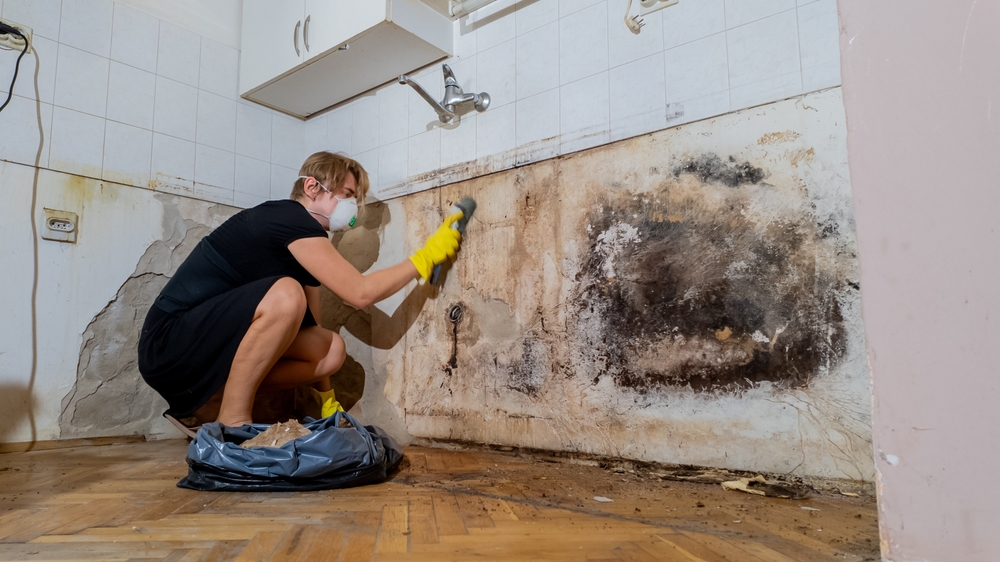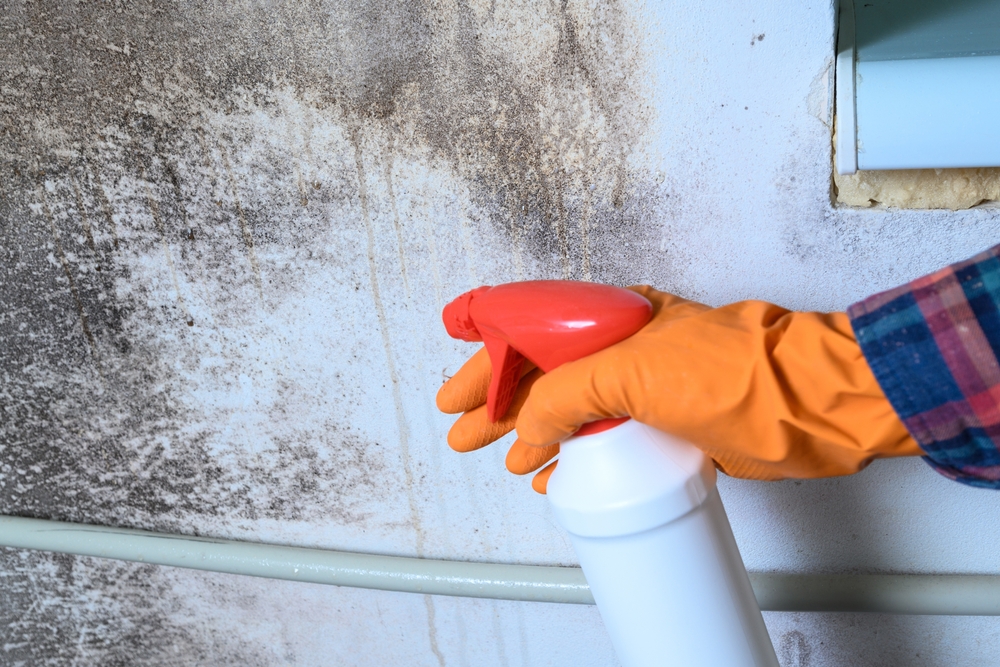Particularly in environments with moisture, mold is a form of fungus that can practically grow anywhere. At first, it may seem innocuous, but if allowed unbridled, mold can lead major issues. Not only can it make your house or company smell bad, but it also seriously compromises your and others around’s health.
Many health problems can be started by high amounts of mold spores. Those who live with mould may have allergic reactions, respiratory problems, or perhaps immune system disorders. These hazards make mould important to address carefully and think of as a necessary first step in preserving a healthy surroundings.
We will go over in this article why mold testing is important, what to expect from the testing process, and how you might avoid mold from starting a problem first hand.
Why is Mold Testing Important?
For many different reasons, mold testing is a crucial activity. It guides the remedial process, helps determine the degree of pollution, and points up mold existence. Let’s probe more into the reasons mold testing is so important.
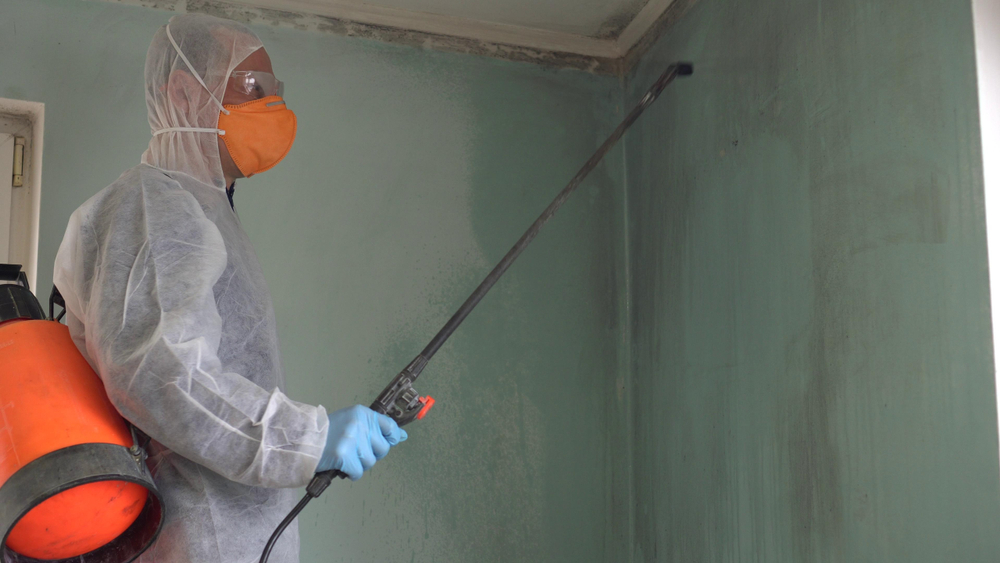
Health Risks of Mold Exposure
From mild to severe, mold exposure can have a variety of negative consequences for health. Understanding the value of mold testing depends on knowing these dangers.
1. Respiratory Problems
Respiratory problems are among the most often occurring medical conditions linked to mold exposure. The Centres for Disease Control and Prevention (CDC) claim that coughing, wheezing, nasal congestion, and throat irritation can all be brought on by breathing mold spores. For those with asthma, mold can aggravate current symptoms or set off asthma attacks. Sometimes mold exposure might cause more severe illnesses such bronchitis or other chronic respiratory problems.
2. Allergic Reactions
One often occurring allergen that might trigger allergy reactions in susceptible people is mold. Among these reactions might include sneezing, runny or stuffy nose, red or irritated eyes, and skin rashes. Though rare, some people may have more severe allergic reactions including anaphylaxis or trouble breathing. About 10 to 20 percent of persons are allergic to mold, according to the American Academy of Allergy, Asthma, and Immunology (AAAAI).
3. Immune System Issues
For persons with compromised immune systems, mold exposure can cause major infections. For patients with HIV/AIDS, organ transplant recipients, and those receiving chemotherapy especially, this is quite worrisome. Under these circumstances, mold can induce invasive infections that travel the body and perhaps result in life-threatening problems. Those with weaker immune systems at more risk for health issues connected to mold exposure, according the Environmental Protection Agency (EPA).
4. Toxic Mold and Mycotoxins
Some forms of mold, including black mold, Stachybotrys chartarum, create poisonous compounds called mycotoxins. Mycotoxin exposure can produce headaches, memory loss, vertigo, and flu-like symptoms among other things. Extended contact to toxic mold can cause more severe health problems including immune system suppression and neurological impairment. Emphasizing the need of stopping mould development and addressing contamination right once, the World Health Organization (WHO) has published on the possible hazards related with mycotoxin exposure.
How Mold Can Cause Property Damage
Apart from hazards to health, mold can seriously harm property. Eating organic materials like wood, paper, and cloth, mould breaks them down over time. A building’s structural stability may suffer as a result, and expensive repairs could follow.
1. Structural Damage
Mold growing on structural elements like wood or plasterboard can cause these materials to degrade. With time, this can affect the building’s stability and safety. For instance, decay resulting from mold growth on floor joists or wooden beams renders the construction dangerous. Severe situations could call for major repairs or perhaps demolition of the building.
2. Damage to Personal Belongings
Mold can also ruin personal items such electronics, clothes, and furniture. Once mold has compromised these objects, removal can be challenging—if not impossible. For example, mold can almost certainly not be cleaned from the fibres of upholstered furniture. Many times, infected objects have to be thrown away, costing money.
3. Impact on Property Value
The value of a house can be considerably diminished by mold presence. Mold-related problems could discourage potential tenants or buyers, therefore lowering the property value. The past of mold issues might influence the marketability of a property even after correction. Sometimes sellers may be obliged to tell possible buyers about past mold problems, therefore affecting the value of the home.
Early Detection and Remediation
Early identification is a main advantage of mold testing. It enables quick remedial action, therefore preventing the mould from spreading and causing more damage.
Preventing Health Issues
Early mold detection can help stop health problems from starting. Dealing with mould issues early on helps you to preserve the health of your family, staff, or renters. In settings where vulnerable people—such as children, the elderly, or those with medical conditions—are present, this is especially crucial.
Minimizing Property Damage
Containment and removal of mold are easier the sooner it is found. Early correction helps to stop mould from spreading to other parts of the building, so limiting the degree of damage and the repair expenses. For instance, stopping mold development in a tiny portion of a wall will help to stop it from spreading to structural components or neighbouring rooms.
Legal and Insurance Considerations
Mold problems occasionally might result in insurance or legal claims. Tenants might, for instance, sue landlords for neglecting to fix mold issues that cause property damage or health hazards. Before paying claims connected to mould, insurance firms could also demand proof of mold testing and repair. Early identification and accurate records can help to reduce these hazards and guarantee adherence to legal and insurance criteria.
What to Expect from a Mold Testing Process
Mold testing comes next logically if you believe mold exists in your house or business. Knowing the testing process will allow you to plan and know what to expect.
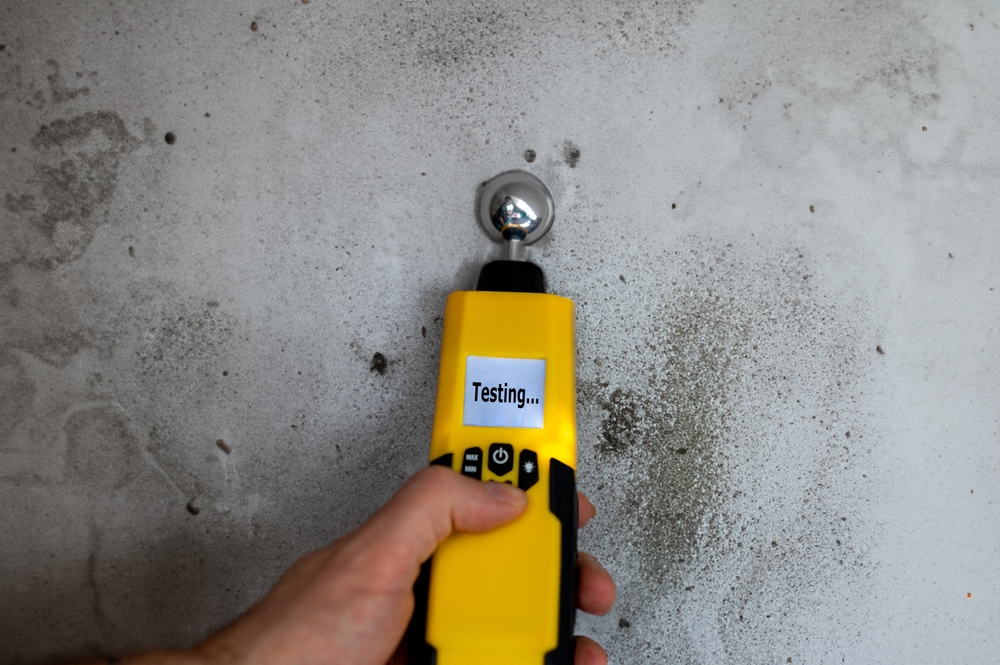
Types of Mold Testing
Each of the numerous techniques for testing mold has benefits and uses of its own. The most often occurring forms of mold testing are seen here in great detail:
1. Air Testing
Among the most often used techniques to find mold is air testing. To gauge the concentration of mold spores in the air, this test gathers air samples from several sections of the structure. The samples are then examined in a lab to ascertain the kinds and amounts of mold there are.
- Advantages: One advantage of air testing is the ability to identify mold that might not be obvious but nonetheless compromises indoor air quality. It can also spot mold spores in places like HVAC systems or behind walls where the mold is concealed.
- Limitations: Variations in ventilation, temperature, and humidity will affect air testing findings. Furthermore, the presence of mold spores in the air does not always point to active mld development; rather, it may simply be a result of disturbed spores.
2. Surface Testing
Surface testing is gathering samples from surfaces thought to be mold-bearing. One can accomplish this by swabs, tape lifts, or bulk sampling among other ways. The gathered samples are next examined to ascertain the kind and concentration of mold present.
- Advantages: Surface testing has several advantages in terms of measuring the degree of contamination and spotting the particular kinds of mold developing on objects. It is especially helpful if mold development is obvious.
- Limitations: Surface testing might not fairly represent the general mold contamination in the structure and only tells about the particular region studied. Surface sampling also might not find mold developing under the surface or in covert locations.
3. Bulk Sampling
Under bulk sampling, items—such as insulation, carpet, or drywall—from probable mold-affected regions are gathered. To evaluate the degree of mold contamination, these samples are forwarded to a lab.
- Advantages: One advantage of bulk sampling is thorough knowledge on the kind and concentration of mold in a given substance. It helps determine how seriously mold contamination of building materials affects them.
- Limitations: Bulk sampling is intrusive and might call for the costly and disruptive removal of building components. It also just tells about the particular elements taken and might not fairly represent the general building contamination.
Choosing a Qualified Mold Inspector
Accurate and dependable test results depend on selecting a certified mold inspector. These guidelines help you select the appropriate inspector:
Certifications and Credentials
Search for a mold inspector certified in pertinent fields, such those of the National Organisation of Remediators and Mold Inspectors (NORMI) or the American Council for Accredited Certification (ACAC). These credentials show that the inspector follows industry standards and has completed specific training.
Experience and Expertise
Select an inspector having mold testing and remedial experience. A competent inspector will be conversant with the several forms of mold, testing techniques, and building designs. They should also be able to offer advice for remedial action and be informed about the possible health hazards connected with mold exposure.
Reputation and References
Reading comments from past customers can help you to evaluate the inspector’s standing. Ask the inspector for references as well; then, get in touch with those references to find out about their interaction with the inspector’s offerings. A respectable inspector will be open about their credentials and ready to offer references.
Use of Advanced Equipment
Make sure the inspector use air sampling pumps, infrared cameras, and moisture meters among other advanced testing tools. These instruments can offer more accurate test findings and help identify concealed mold. An inspector using current equipment is more likely to offer consistent and exhaustive testing.
Detailed Reporting
Including the kinds and amounts of mold discovered, the areas examined, and advice for remedial action, a competent mold inspector should present a thorough report of the test findings. The report must to be easily understandable and have concise justifications of the results. Guiding the remedial process and handling any legal or insurance issues depend on a thorough documentation.
The Mold Testing Process Step-by-Step
Usually spanning numerous stages, from the first inspection to the sample analysis, the mold testing process consists The following is what to anticipate throughout the testing process:
1. Initial Inspection
An initial property examination forms the first phase of the mold testing process. Looking for indicators of mold development, moisture intrusion, and water damage, the inspector will visually evaluate the building. They might also be curious about any past water damage or mold problems as well as any health signs you or others in the building have noticed.
2. Sampling
Following the first check, the inspector will gather samples from suspected mold-infested locations. The particular situation and the assessment of the inspector will determine the kind of sample technique applied. For instance, surface samples could come from locations showing obvious mold growth whereas air samples could be taken in rooms where mold is suspected but not apparent.
3. Laboratory Analysis
The gathered samples travel to a lab for examination. The lab will find the kinds of mold present and track sample mold spore concentration. The study might also provide details regarding the possible health hazards connected to the recognized forms of mold.
4. Reporting
The inspector will provide you a thorough report on the results once the lab analysis is finished. The report will contain details on the locations evaluated, the varieties and concentrations of mold discovered, and any suggestions for repairs. The inspector might also offer direction on how to stop mold from developing going forward.
5. Remediation Recommendations
The test findings will guide the mold inspector in recommending suitable corrective action. These could be cleaning and disinfecting impacted areas, fixing water damage, enhancing airflow, and using dehumidifiers to lower moisture content. Sometimes expert mold remediation services in Philadelphia are needed, especially if dangerous mold is present or if the mold contamination is significant.
Preventing Mold Growth
Although identifying and fixing current mold problems depends on mold testing, prevention is the greatest way to totally avoid mold-related problems. These guidelines will help you stop mold development in your house or business:
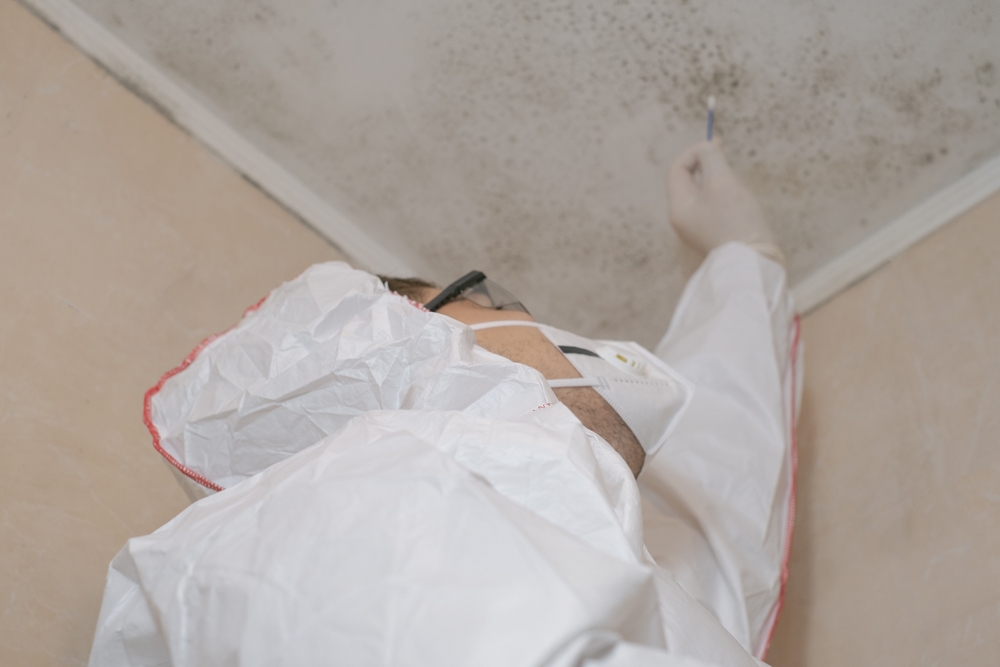
Control Moisture Levels
The main element driving mold development is moisture. Reducing moisture levels will help you greatly lower the mould risk.
1. Fix Leaks Promptly
Leaks in pipes, walls, or ceilings could provide perfect environment for mold development. Fix any leaks right away to stop water from building up in secret locations. Check your house or company often for leaks—water stains, flaking paint or musty smells.
2. Use Dehumidifiers
Use dehumidifiers to lower moisture levels in high humidity places like bathrooms or basements. Try to maintain indoor humidity levels below 60%; mould is less likely to flourish in dryer environments. In hot and humid conditions, you can also aid to regulate humidity by using air conditioning.
3. Improve Ventilation
Particularly in bathrooms, kitchens, and laundry rooms, proper ventilation is crucial for avoiding moisture buildup. Exhaust fans help to vent moisture outdoors; make sure stoves and dryers are correctly vented. To further air circulation, especially following events like cooking or showering that produce moisture, open windows and doors can help.
4. Insulate Pipes and Walls
By helping to reduce condensation—which can cause mold development—insulating walls and pipes helps To lower the possibility of condensation developing on cold surfaces in colder climates, think about insulating windows and outside walls. Insulating pipes can stop condensation in unconditioned areas, including crawl spaces or attics, in warmer regions.
Regular Maintenance and Cleaning
By tackling possible problem areas before they become major, regular maintenance and cleaning help avoid mold.
1. Clean and Inspect Gutters
Mold development results from water overflowing and seeping into your house or company from blocked gutters. Frequent gutter cleaning will help you to find deterioration including cracks or loose joints. Make sure downspouts send water away from the foundation of the building to avoid pooling close by.
2. Use Mold-Resistant Products
Think about including mold-resistant products—such as paint, insulation, or drywall—into any building or renovation project. Particularly in moisture-prone environments like bathrooms or basements, these materials are meant to withstand mold development and offer an extra degree of protection.
3. Regularly Clean Bathrooms and Kitchens
Because of their moisture content, bathrooms and kitchens are frequent sites for mold growth. Frequent cleaning and disinfection of these spaces should pay especially attention to surfaces including counters, sinks, and showers tiles. Clean places like grout lines or under sinks where mould is likely to flourish using mold-killing chemicals like vinegar or bleach.
4. Inspect and Maintain HVAC Systems
Inappropriate maintenance of HVAC systems can lead to mold development. Check and clean your HVAC system often including coils, filters, and air ducts. To cut the amount of mold spores moving through the system, think about putting in a high-efficiency particulate air (HEPA) filter.
Conclusion
Maintaining a safe and healthy living or workplace depends on a first stage of mould testing. It guides the remedial process, helps determine the degree of pollution, and points up mold existence. Understanding the need of mold testing and knowing what to expect from the procedure will help you to move ahead to save your property and health.
The greatest approach to avoid mold-related problems is to stop mould development by means of appropriate cleaning, moisture management, and consistent maintenance. If you believe mould is present, though, don’t hesitate to have tested and remediated by a competent mold inspector. Early identification and quick response help to stop mold from seriously compromising health conditions or damaging property.
Maintaining mold-free and safe conditions for everyone who uses your house or company depends on your being alert and knowledgeable.
Philadelphia Restoration Services
https://www.google.com/maps?cid=3399342399556699153
+1 267 668 0013
https://philadelphiarestorationservices.com/

